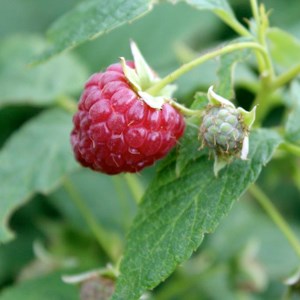Contact
Paul.Becher@slu.se, 040-41 53 05

A species of fly works together with a yeast to combat a raspberry-bound mould that threatens the insects' larvae. This is the topic of a recent article written by Paul Becher and colleagues.
Fruit flies and yeasts live in close relationships. Larvae of the spotted wing drosophila, Drosophila suzukii, feed on berries and other fruit. A widely distributed yeast Hanseniaspora uvarum is often found in raspberries infested with D. suzukii larvae. Can the interaction with yeast be beneficial for both the fly and the yeast?
– Yeasts depend on animals for dispersal and emit volatiles, some of which are pleasant odorants. Animals are attracted and spread the yeast. We show that H. uvarum volatiles attract D. suzukii females for egg-laying, and larvae for feeding, says Paul Becher.
– We tested the hypothesis that yeast odorants are honest signals that advertise nutritional quality. Yeast alone is indeed sufficient to support larval development. Flies and larvae also discriminate between yeasts and specifically respond to H. uvarum, which matches its suitability as food substrate. Moreover, other yeasts such as baker’s yeast Saccharomyces cerevisiae produce ethanol at concentrations that are toxic to the larvae, but H. uvarum doesn’t.
On ripe raspberries, the mould fungus Botrytis cinerea outcompetes other microbes, and has a negative impact on the survival of larvae. This is reflected by the deterrent effect of mould odorants on larvae and flies.
Yeasts, including H. uvarum, possess antifungal properties. However, H. uvarum outgrows B. cinerea mould only in the presence of D. suzukii larvae. Larval feeding creates conditions that facilitate yeast proliferation, which benefits larvae through nutritional services and also through protection against fungal antagonists.
– An active modification of the raspberry substrate lays the ground for a mutualistic interaction between the spotted wing drosophila and an associated yeast, concludes Paul.
Paul.Becher@slu.se, 040-41 53 05
Read the article "Yeast and fruit fly mutual niche construction and antagonism against mould" in the scientific journal Functional Ecology
"Raspberries are a battleground between flies, yeast and fungi" - New Scientist writes about the article